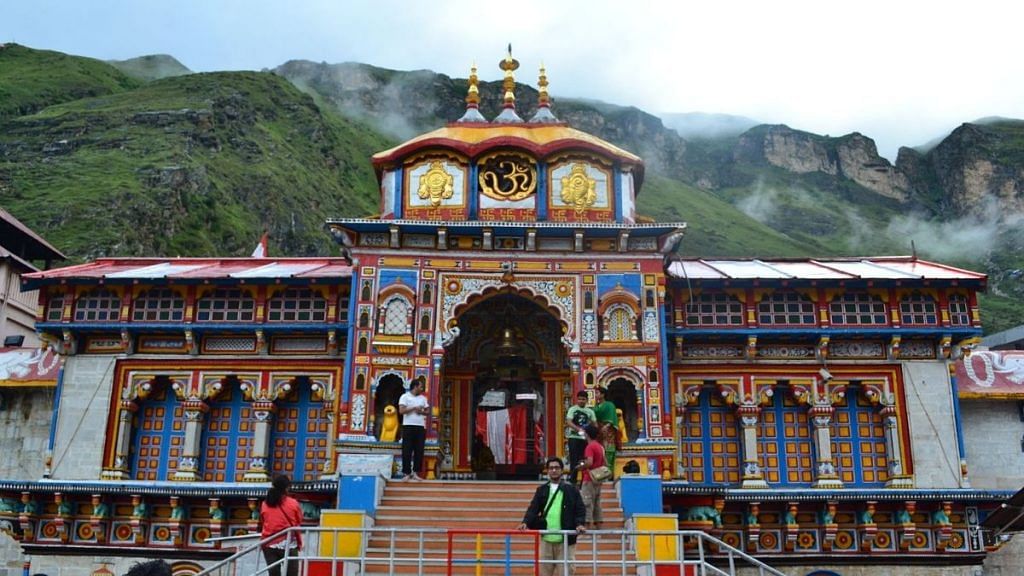Caving under pressure from protests by priests and their supporters, the chief minister of Uttarakhand, Pushkar Singh Dhami, has rolled back the controversial and unpopular Char Dham Devasthanam Board Management Act. The Bill was passed by his predecessor, Trivendra Singh Rawat, which facilitated the state government’s takeover of 53 important temples, including the popular Gangotri, Yamunotri, Kedarnath and Badrinath temples. The move to control the temples and the subsequent backtracking on the decision is likely to have far-reaching ramifications in other states as well.
The Uttarakhand Char Dham Devasthanam Management Act was passed by the state assembly in 2019 and the Uttarakhand Char Dham Devasthanam Board was formed in January 2020 to manage temples. In June 2020, the Uttarakhand High Court dismissed a PIL against the formation of the board as it allowed the government to take over control of Char Dham and 49 other temples. The court said that the board will only handle the administration and management of the properties.
The priests and the administrative board of these temples registered strong opposition to the move and received overwhelming support from local residents, pilgrims, and politicians from all across India. In the wake of these protests and snowballing of resentment against the Dhami government, it hardly had any choice but to beat a hasty retreat without giving any valid reason for the repeal. Incidentally, it is an enigma as to why the government passed such an Act in the first place.
Besides the protests, the 2022 assembly elections are another important and inevitable reason for the withdrawal of the Act. Uttarakhand is probably one state where the Congress still has some leadership and grassroots support left. The temple issue could have become a political stick in the hands of the Congress to beat the Bharatiya Janata Party (BJP) with. But elsewhere in the country, the BJP can easily turn this emotional issue into a popular movement in its favour.
Also read: Vindicated, say Uttarakhand priests as state govt decides to repeal Char Dham Board Act
Why British took control
Government control over Hindu places of worship has a long history dating back to the British Raj when the ruling class saw the temples as a source of wealth to be looted freely. The Religious Endowments Act, 1863 authorised the East India Company agents and local administrators to take control of temples and mosques “for the due appropriation of the rents and produce of lands granted for the support of Mosques, Hindu Temples, Colleges and other purposes; for the maintenance and repair of Bridges, Sarais, Kattras and other public buildings”. The Madras Regulation VII of 1817 sought to wrest control of not only the temples but also close all other activities such as Sanskrit teaching, ved pathshalas, gaushalas (cow sheds) and annakshetras (free meal distribution). Though some concessions were made regarding daily rituals, the overall control was still vested with the British administrators. Subsequently, the control over non-Hindu places of worship and some temples exclusively owned by castes other than Brahmins were handed back to these communities. Sometime in 1925 more temples came under British control because they were found to be centres of freedom movement.
Also read: Did Modi give Hindus closure? A PIL against the Places of Worship Act will decide the answer
Freeing the temples
The movement for freeing temples from government control is rapidly gaining ground, especially in states where the BJP is not in power. The arguments put forward by the agitating groups, temple committees and civil society are very strong, logical and irrefutable. Government control over temples interferes with day-to-day rituals, following traditions and freedom of worship as laid down by socio-cultural norms. Besides, supporters of Dravidian parties, Communist parties and governments that openly profess to be atheists and have conducted events (such as holding processions of Hindu idols with shoe garlands, beef stalls in front of temples) that flagrantly challenge Hindu rituals and religious sentiments, are in control of temples. Also, the revenue from the temples is used for general purposes, including activities that are not even remotely concerned with the purpose of the donation.
Incidentally, the gurdwaras in Punjab, Haryana and Himachal Pradesh are in control of the Shiromani Gurdwara Parbandhak Committee (SGPC) formed in 1920, an elected body under the Sikh Gurdwaras Act 1925, and no government can interfere with their functioning or control their revenues. Jain derasars and churches are controlled by their respective communities. Muslim religious places like mosques, idgahas, dargahs and other Islamic religious institutions are tightly controlled by the Muslim community and the Central Waqf Board.
The Madras High Court recently asked the Tamil Nadu government to withhold the melting of gold offerings made in Hindu temples under its control while more than 500 kgs of gold had already been converted into gold bars. Those seeking to free the temples from government control pointed out that the revenue earned out of this process was not used for the upkeep of the temples. These and many such irrefutable reasons clearly indicate the weak stand of the governments and the strong footing on which the protagonists of the movement stand. Needless to say, the Hindu community must come up with a strong and flawless mechanism to manage the freed temples and eschew corruption, in pecuniary and traditional terms. Meanwhile, the strong emotional appeal and the rich political advantage of the issue cannot be overlooked.
The author is the former editor of ‘Organiser’. He tweets @seshadrichari. Views are personal.
(Edited by Neera Majumdar)
